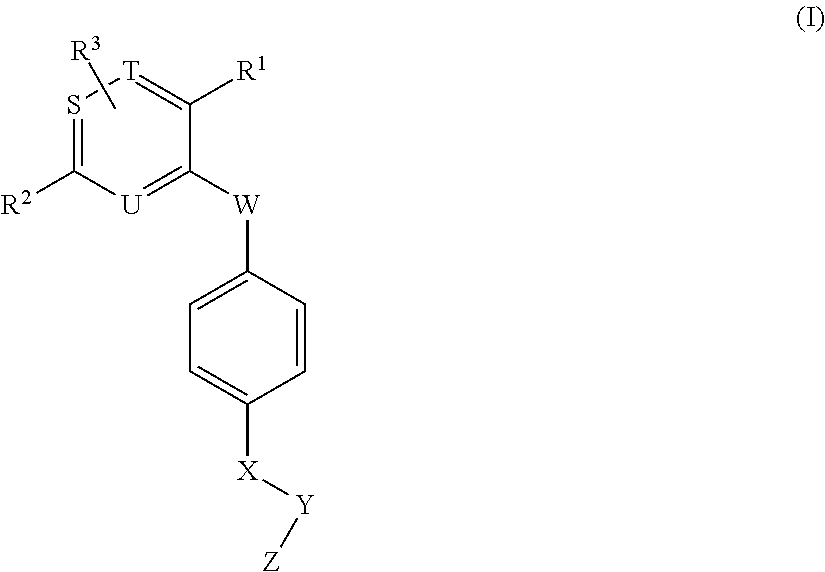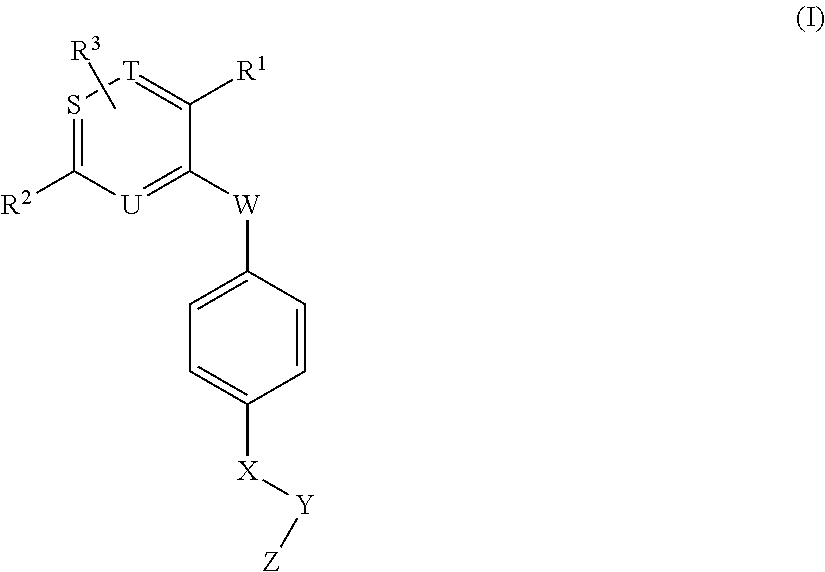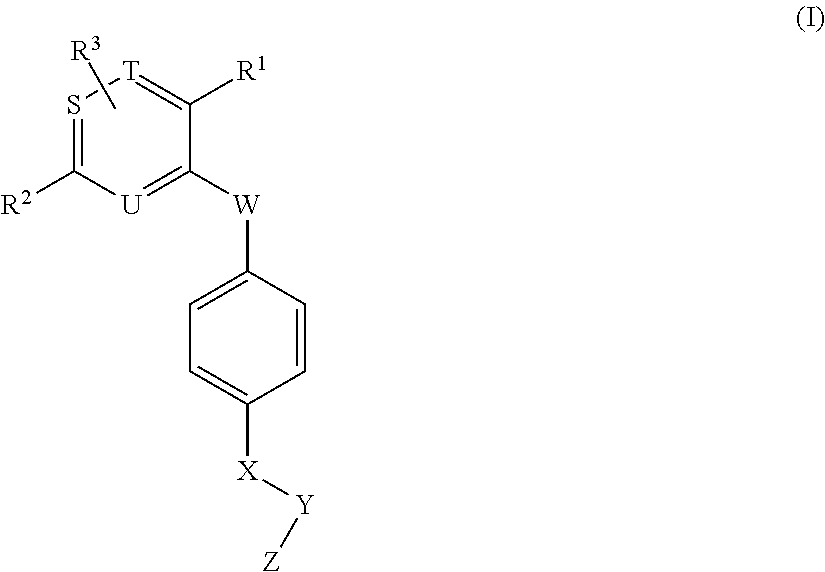Novel aromatic compound and use thereof
- Summary
- Abstract
- Description
- Claims
- Application Information
AI Technical Summary
Benefits of technology
Problems solved by technology
Method used
Image
Examples
reference example 1
4-{3-[2-(tetrahydropyran-2-yloxy)ethoxy]azetidin-1-yl}phenylamine
(1a) 1-benzhydryl-3-[2-(tetrahydropyran-2-yloxy)ethoxy]azetidine
[0256]
[0257]1-Benzhydrylazetidin-3-ol (20.0 g, 83.6 mmol) was dissolved in dimethylformamide (150 mL), sodium hydride (P=60%) (5.02 g, 125 mmol) was separately added under ice-cooling, and the mixture was stirred at the same temperature. 2-(2-Bromoethoxy)tetrahydropyran (18.9 mL, 125 mmol) was added dropwise at 60° C. and the mixture was stirred for 30 min. Sodium hydride (P=60%) (2.00 g, 50 mmol) was added and the mixture was stirred for 12 hr and allowed to cool to room temperature. Water was added to the reaction mixture and the mixture was extracted twice with ethyl acetate. The organic layer was washed with water and saturated brine, and dried over anhydrous sodium sulfate. The solvent was evaporated under reduced pressure, and the obtained residue was purified by silica gel column chromatography (hexane:ethyl acetate, 6:1→43:1, V / V). The solvent of t...
reference example 2
1-(4-iodophenyl)-3-[2-(tetrahydropyran-2-yloxy)ethoxy]azetidine
(2a) 1-phenyl-3-[2-(tetrahydropyran-2-yloxy)ethoxy]azetidine
[0266]
[0267]20% Palladium hydroxide-carbon (0.90 g) was suspended in methanol (200 mL), 1-benzhydryl-3-[2-(tetrahydropyran-2-yloxy)ethoxy]azetidine (17.7 g, 48.2 mmol) produced in Reference Example 1 (1a) was added, and catalytic hydrogenation was performed at room temperature, 0.3 MPa for 46 hr. The insoluble material was filtered off, and the solvent was evaporated under reduced pressure.
[0268]To the obtained residue were added iodobenzene (7.0 mL, 63 mmol), copper(I) iodide (918 mg, 4.82 mmol), L-proline (1.11 g, 9.64 mmol), potassium carbonate (13.3 g, 96.2 mmol) and dimethyl sulfoxide (24 mL), nitrogen was bubbled for 1 minute, and the mixture was stirred under a nitrogen atmosphere at 70° C. for 19 hr. The mixture was allowed to cool, poured into water (120 mL) and the mixture was extracted twice with ethyl acetate (100 mL). The organic layers were combine...
reference example 3
2-(tetrahydrofuran-3-yloxy)ethanol
(3a) 2-[2-(tetrahydrofuran-3-yloxy)ethoxy]tetrahydropyran
[0273]
[0274]Tetrahydrofuran-3-ol (10.0 g, 114 mmol) was dissolved in dimethylformamide (200 mL), sodium hydride (P=60%) (5.9 g, 0.15 mol) was added under ice-cooling, and the mixture was stirred at room temperature for 30 min. 2-(2-Bromoethoxy)tetrahydropyran (30.9 g, 148 mmol) was added, and the mixture was stirred at 90° C. for 1 hr. To the reaction mixture was added ethyl acetate, and the mixture was washed successively with water and then with saturated brine, and dried over anhydrous sodium sulfate, and the solvent was evaporated under reduced pressure. The obtained residue was purified by silica gel column chromatography (hexane:ethyl acetate, 8:1→4:1, V / V), and the solvent of the object fraction was evaporated under reduced pressure to give the title object compound as a pale-yellow oil (8.88 g, yield 36%).
[0275]1H-NMR (CDCl3, 400 MHz) δ: 1.47-1.64 (4H, m), 1.67-1.89 (2H, m), 1.94-2.03 ...
PUM
| Property | Measurement | Unit |
|---|---|---|
| Toxicity | aaaaa | aaaaa |
| Bioabsorbable | aaaaa | aaaaa |
| Pharmacokinetics | aaaaa | aaaaa |
Abstract
Description
Claims
Application Information
 Login to View More
Login to View More - R&D
- Intellectual Property
- Life Sciences
- Materials
- Tech Scout
- Unparalleled Data Quality
- Higher Quality Content
- 60% Fewer Hallucinations
Browse by: Latest US Patents, China's latest patents, Technical Efficacy Thesaurus, Application Domain, Technology Topic, Popular Technical Reports.
© 2025 PatSnap. All rights reserved.Legal|Privacy policy|Modern Slavery Act Transparency Statement|Sitemap|About US| Contact US: help@patsnap.com



